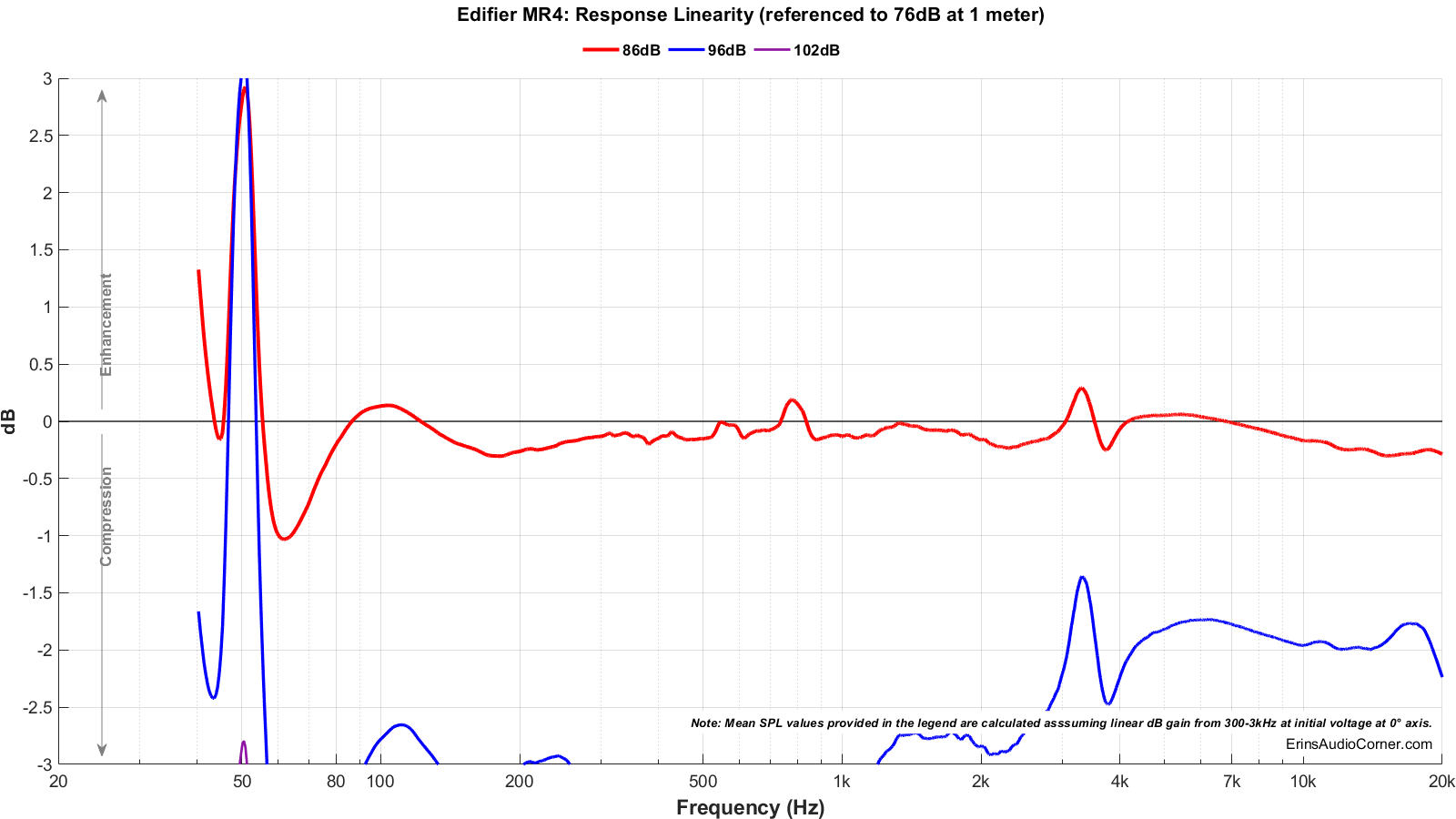dasdoing
Major Contributor
I would simply rather compare and overlay the actual measured response to its extrapolated “minimum phase” version.
I enjoy that. It's a good approach to observe the outcomes of phase correction.
I would simply rather compare and overlay the actual measured response to its extrapolated “minimum phase” version.
It would be interesting to try and apply all pass filters to some of these test tracks -- possibly even to try and simulate/convolve it with a phase plug horn model that's actually "time smearing" as well -- and see if people can hear a difference via Foobar ABX plugin. The former would be much simpler, though, to create. Ideally, the system used to listen to the tracks is linear phase already as well for easier critical listening e.g. headphones.
It would be interesting to try and apply all pass filters to some of these test tracks
This has been tested many, many times. Many different ways.Could you elaborate on your question?
What does it even mean to say “phase response is audible” or “not audible”?
Did you listen/watch the video I posted and how it can be argued either way depending on the test design?
In any way, Bone Conduction should not be ignored especially in hearing high-gain very-high-Fq sharp-transient
Conclusion is that for HiFi applications bone conduction via transmission through air is totally irrelevant.
Do you mean all of the air-conduction plus bone-conduction hybrid headset, headphone, in-ear earbuds are not HiFi applications/gears, and therefore they should be excluded from our current discussion on this thread?
Bone conduction only works under water or when attaching a transmitter to the head.
I assume that "bone conduction" too would be a matter of consideration for "transient hearing", in listening to this kind of high-energy (high-gain) high-Fq sharp-transient sound; of course we need nice HiFi tweeters plus excellent super-tweeters, though.
But following statement could give the impression it's also relevant for normal loudspeakers:
What about speaker compression? It takes a minimum of two measurements to detect it.

Yes thats correct.Hello OP @tangband,
Although quite belated, I just note my own confusion on the thread title.
Would you please clarify/define what is "the perceived audio quality in a system"?
My participation on this thread has been based on my understanding (or misunderstanding) of the thread title as to be "our subjective hearing sensation" for passive/transient sounds (at our usual listening position) given by our home audio setup including room acoustic environments.
A case of "pictures say more than 1000 words". Thumbs up!Do you mean something like the ff?
View attachment 287162
View attachment 287163
"Time smear" from (what I assume is) a large compression diaphragm horn with phase plug and abrupt exit angles may look more like this:
*edit: re-directs now to correct pdf link
View attachment 287165
View attachment 287166 View attachment 287167
…. And that “first sound” is perfectly represented by the Fourier series of the frequency components a speaker can linearly reproduce (flat FR to 20khz). Please have a look how Fourier works as I get the impression that you still haven’t fully understood it, because otherwise you wouldn’t continue to ask these questions.Yes thats correct.
It seems that the very first sound ( transient ) from a flute or acoustic guitar makes the caracter of the instruments timbre and also maybe the perceived pitch ?
Take away the first 0.1 second of the tone and it sounds almost like another instrument.
This makes me think that a good transient response from the speakers are important.
Definitely not. The "classic" JBL bass is an exaggeration that can be enjoyable or annoying depending on source content and room placement. The Bluehorn was about as far away from that as I could imagine. Other than its deep extension it didn't draw attention to itself. Listening to familiar tracks with VLF content the bass was deeper and subjectively "clearer" (less group delay) than I was used to.Let's rename "transient response" to "1980's JBL L112-style punchy bass."
Are you saying that the Bluehorn has that same kind of classic JBL L112-style bass? [in a good way?]
This punchy bass is something I've *felt* at the symphony with percussion instruments and I *know* that it has to be distortion/phase, etc. I do think my Bose 901 Series VI has some of that same *feeling* as well.
Got it. I was confused about the “transient” language.Definitely not. The "classic" JBL bass is an exaggeration that can be enjoyable or annoying depending on source content and room placement. The Bluehorn was about as far away from that as I could imagine. Other than its deep extension it didn't draw attention to itself. Listening to familiar tracks with VLF content the bass was deeper and subjectively "clearer" (less group delay) than I was used to.
Right... perhaps I should have talked about its PRaT.Got it. I was confused about the “transient” language.
Transient response is 100% coved by frequency response. This was answered starting with the first response to your OP. Which is why you should get speakers with good frequency response.Yes thats correct.
It seems that the very first sound ( transient ) from a flute or acoustic guitar makes the caracter of the instruments timbre and also maybe the perceived pitch ?
Take away the first 0.1 second of the tone and it sounds almost like another instrument.
This makes me think that a good transient response from the speakers are important.
No, Im learningTransient response is 100% coved by frequency response. This was answered starting with the first response to your OP. Which is why you should get speakers with good frequency response.
If a speaker can reproduce a harpsicord forwards, it can do so backwards just the same. It has the same spectrum per Fourier, just different time ordering which is unimportant to the speakers.
Your flute example however is non-physical.
You got good answers starting from the first, but it seems you are resisting the physics.
